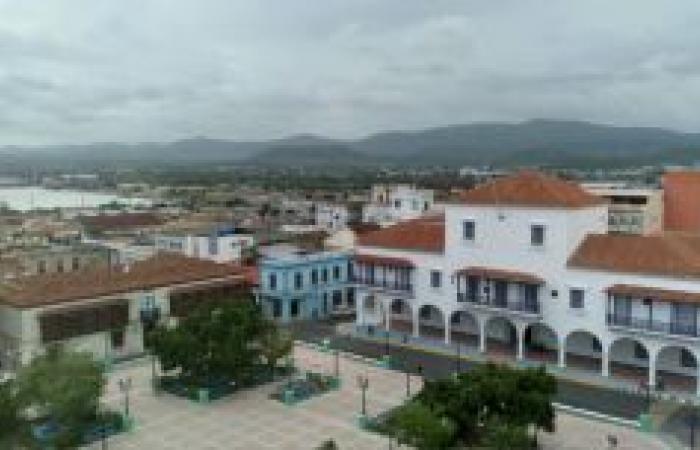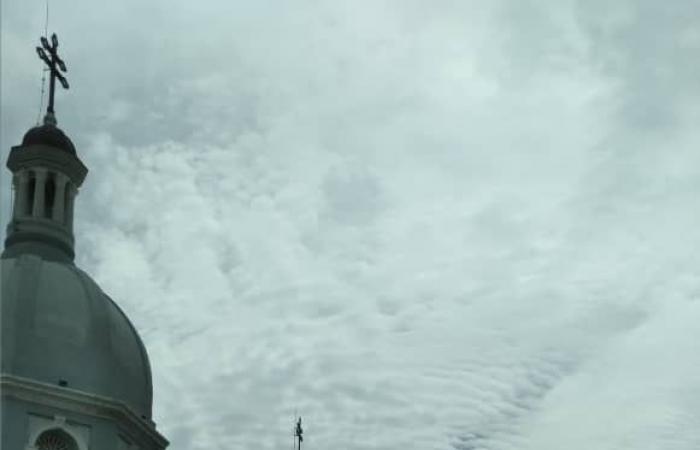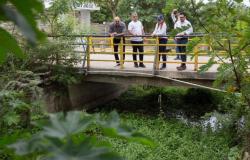The former town – founded on July 25, 1515 by Adelantado Diego Velázquez – is one of the few of its kind that maintains its original layout and the surroundings of its Plaza Mayor with the institutions that the Crown designated to govern life in the New World: the Church, the Governor’s House and the headquarters of the Cabildo (Town Hall).
Added to all this is that the current historic urban center of what has held the title of city since 1522 corresponds “with the traditional center that the colonial city maintained until the end of the 19th century, whose limits are Paseo Martí (North); Avenida 24 de Febrero, the emblematic Trocha-, (South); the old area of the Moncada barracks military complexes and others, (East); and the Bay (West)”, highlighted Aida Liliana Morales Tejeda, president of the Provincial Branch of the Union of Historians of Cuba (UNIHC).
The also Head of the Department of Historical and Applied Research of the Office of the Conservator of the City of Santiago de Cuba (OCC), noted that “it is significant that in its 3.2 square kilometers of extension there are quite a few properties that, due to their value exceptional, they hold the status of National Monument and numerous sites that served as the scene of transcendental events for the Homeland. “These elements were unquestionable when the Commission agreed to declare it as such.”
A unique city, with people and buildings that make you fall in love.
At the end of the 19th century it was common to say “I’m going to Cuba” to refer to the capital of Oriente, an urban complex that grew in the form of concentric rings from a system of seven churches and associated plazas; also with commercial streets and a semi-regular layout that was adapted to what the Laws of the Indies dictated “and to the topography of this undulating valley, between the sea and the mountains of the Sierra Maestra,” Morales Tejeda emphasized.
Thus, streets, alleys, alleys and staircases like the famous Padre Pico -, in which Mayté García and her children Jeiler and Jennifer want “to the point of not conceiving of living in another area of the city other than this one, of joy carnivalesque and colonial houses,” as the parent argued, give a uniqueness to the city in the island context.
Santiago sits on terraces, turned into natural viewpoints, such as the one on Corona Street, from the historic Balcón de Velázquez, “where I met my current husband on an afternoon in 1997,” as Marianela Santana Castellanos recalled.
Higher up is the Plaza Dolores, “which I go to from the nearby Heredia Street, where the Carnival Museum, the Elvira Cape Library, the Casa Dranguet, that of José María el Cantor del Niágara are located, and with a life extraordinary cultural,” explained Clara Sonia Hechavarría Rengifo, a young woman who has lived her 28 years in this artery, formerly called the Cathedral. The third viewpoint is in the old Normal School for Teachers of the East, from where you can see almost the entire colonial city, “which joins the sea and the Sierra in an indescribable way, but assumed as a source of inspiration for numerous artists,” warned the cultural journalist Miguel Ángel Gaínza Chacón.
The harmonious link between the remarkably traditional architecture made by master bricklayers and carpenters who from early on understood that seismicity was constant, and the natural, has wood as a very important material, the stately houses, which also served as viewpoints, illustrated as “watchtower houses”, by the renowned archaeologist and professor Francisco Prat Puig.
Santiago falls in love, most of his children say, “I am proud to live in El Tívoli, and although I am of French descent, I feel very Cuban and, above all, from Santiago,” said Sucel Diodonet Estrada. Magda Cabrera Gómez lives in a 19th century house, located on Carnicería and Princesa, “which I love, although it is very difficult to preserve it, even the cistern in the patio is useful to me,” she said.
The Spanish Rocío Zambudio Vivancos did the same, “because since I set foot on this land I was captivated and told myself: Rocío, this is your new home. From Murcia to Havana, and for eight years this has been my city. When I walked down Enramadas Street, I observed its neatness and the state of conservation of such beautiful buildings, I understood that Santiago was something special within this Island.
This Spanish-Cuban woman decided to live in what was the capital of Cuba until 1608, “and I was able to get a job at the OCC, where I dedicate myself to the design of books, magazines, like this one about José Martí, or in heritage interpretation centers.” recently built. Man, this is a beauty, since 1992 I have loved Cuba and my purpose in life is to always do something for it,” she stated.
Preserve for the present and the future
According to Omar López Rodríguez, director of the OCC, “every restoration and conservation action has a public utility.” In this sense, there is constant action in “heritage properties, of all forms of property, and public spaces in order to maintain their vitality, directly impacting the quality of the infrastructure and the life of natives and foreigners.”
Thus, the 39 parks and squares located in the heritage area are the object of care by specialists and green area operators, as well as Security and Protection agents, “however, the vandalism in some places disdains all the work; For example, at the beginning of this year on Paseo de La Alameda, its ten parks were equipped with public lighting and their benches and green areas were restored; Unscrupulous people have stolen them, damaged the gardens and even performed physiological needs on them, even defying the custodians,” said Leonel Lorié Pérez, deputy director of the City Conservator’s Office.
In the face of behavior of this nature, the weight of the Law must necessarily be applied, as the country has a robust legal framework to protect Heritage -specifically Law 155/2022-, and the actions of people to correct them. from early ages. Heritage is publicly owned, especially in Socialism.
To preserve the city is to give continuity to the efforts that, since the late nineteenth century, by personalities such as Don Emilio Bacardi, first mayor and founder in 1899 of the pioneer of Cuban museums, and many others, such as Emilio Roig de Leuchsenring, who promoted in the 30s of the 20th century from the National Board of Archeology and Ethnology, recognizing the first towns as national monuments.
Also, it is to be consistent with the enormous efforts of institutions that defend this material legacy, from academic research, projects and financing to restore what has been deteriorated by time, neglect and people, as well as “the continuous preservation of areas, such as the so-called ring zero, of buildings that are national and local monuments; the implementation of the City Master Plan and the strategy to manage its Historic Center, with a high degree of popular participation, with palpable examples in the neighborhoods in transformation, and the promotion of the values of Santiago de Cuba,” Morales Tejeda emphasized.
Not in vain, according to sources from the National Institute of Territorial Planning and Urban Planning (Inotu), the city of Santiago de Cuba was the first in the country to have its Urban Planning Plan, approved by the Council of Ministers in 2014, and which has been updated.
Various entities of the province, led by the OCC, return the splendor to the old City Hall from whose balcony the Commander in Chief declared the victory of the rebels over the batistate, and to the old Municipal Bivouac that will serve as headquarters for the Provincial Branch of the INIHC , the Office of the City Historian, and a department of the Faculty of Art of the Restoration of Cultural Heritage.
The Museum of Historical Environment, home of Diego Velázquez, considered the oldest of those built by the Spanish in the New World, the Metropolitan Cathedral, the eclectic San Carlos Club, and the rest of the buildings that surround the founding nucleus of the Villa are priorities, as well as the training, through the learning-by-doing method, of novice blacksmiths, plasterers, carpenters, bricklayers and restorers at the Ugo Luisi School-Workshop.
Santiago is Cuban heritage; its historic center has been a National Monument since 1979, and five years later he received the Honorary Title of Hero of the Republic and the Antonio Maceo Order. This June 24, in addition, marks the half millennium since the death of Diego Velázquez, the founder of the town that has marked an important part of the course of the history of the Greater Antilles.







